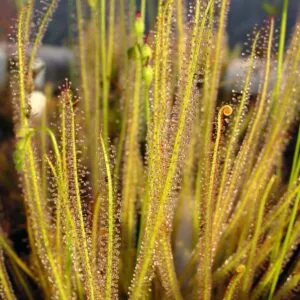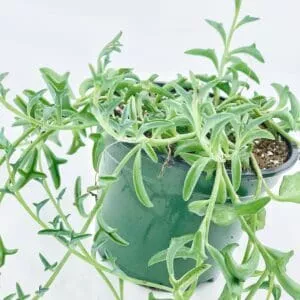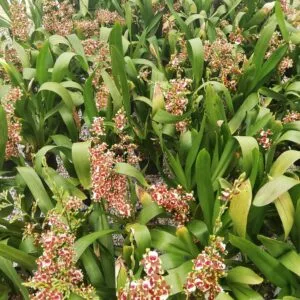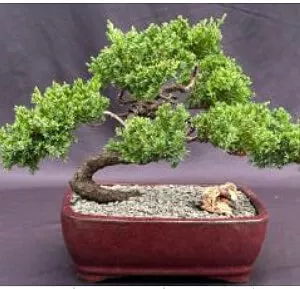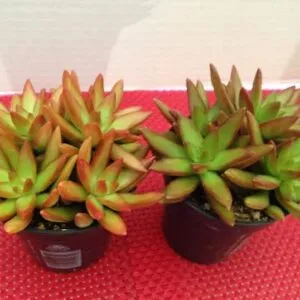No products in the cart.
Table of Contents
Nobody loves blue days, right! But if you have the blue daze flowers in your garden, those blueish days are forgotten. The Evolvulus glomeratus produces elusive color displays to brighten any southern or northern garden.
What is Blue Daze?

The blue daze you can grow as a ground cover in the garden. It has lovely blue flowers and is a tough but tender perennial. In cooler parts of the United States, gardeners grow it as an annual.
Another impressive thing is growing them in coastal gardens or a container. The low-growing spreading plant thrives in a sunny spot to create an ocean of sky-blue flowers. The blooms grow atop silvery green leaves.
The dwarf morning glory family blooms in late spring until the first frost and attracts butterflies and bees. The astonishing thing to see is when the flowers close up on a cloudy day or when evening arrives.
Blue daze flowers you find prominently growing in Brazil and Paraguay. While the dwarf morning glory flower is short-lived, you see them replaced with new blooms the following day. Your tropical plant can reach up to 12 inches wide and 3 feet tall.
If you live in the USDA zones 8-11, it grows well. So let us look a bit closer at the blue daze care to brighten up your day.
Blue Daze Care
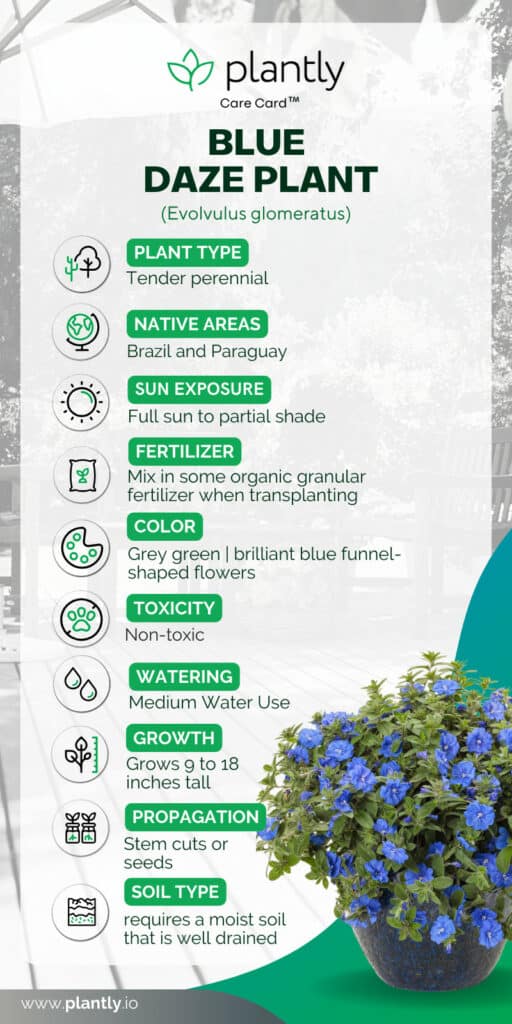
Evolvulus glomeratus is a low-maintenance yet self-cleaning plant. You need not worry about removing spent blooms. Your plant flourishes in the heat of summer and can withstand some drought.
Ideal Soil Mixing for Morning Glory Family
Whether grown in a hanging basket or as ground cover, it prefers acidic soil but can tolerate a neutral pH. The important thing is to provide your lovely evergreen shrub with loamy yet well-drained soil.
Lighting Needs for Ground Cover
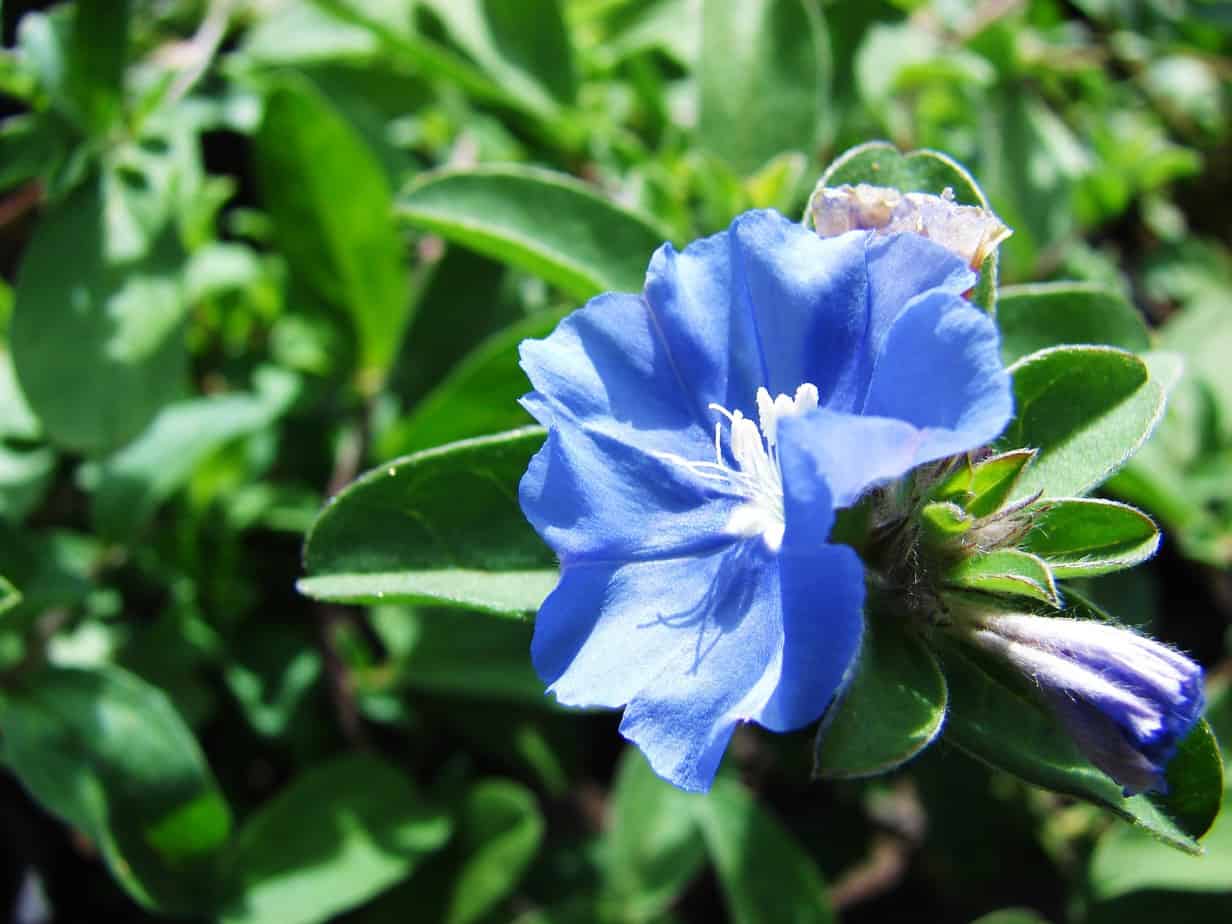
You can grow blue daze flowers in full sunlight to receive up to eight hours of light per day. It helps to encourage flowering throughout the growing season.
The sun shining on the spring flowers helps maintain lush foliage while keeping it compact.
When grown in too much shade, your plant becomes leggy and produces fewer blooms while losing that gorgeous silvery shiny sheen on the leaves. If you’re growing them as an indoor plant, place them near a sunny window for optimal coverage.
Watering the Blue Daze to Prevent Root Rot
The Evolvulus blue daze will do best when the soil remains moist but can tolerate when you leave the soil dry for a while. Unfortunately, one of the quickest ways to kill your plants like the Evolvulus glomeratus is to overwater your plant leading to root rot.
Humidity and Temperature Needs

The evergreen member of the Convolvulaceae family thrives in temperatures above 65°F. While hardy plants they cannot tolerate frost. Yet, for coastal gardens, the beautiful flowers and foliage can withstand the salty conditions of the sea. So planting them close to the ocean is not a concern, even direct salt spray.
Pruning Your Sky Blue Daze
When growing your plant in hanging baskets, the blue daze’s size is not huge. You can deadhead spent blossoms to encourage new blooms. When treated as an outdoor plant, it does need pruning when starting.
You can cut them back to encourage new growth leading to a bushier plant. If your blue daze looks leggy, you can cut it back to help it revitalize. You can also over-winter your plant grown as annual by taking some cuttings.
Fertilizing Blue Daze Plant
Growing blue daze, you can provide your tropical plant with a monthly feed in spring and summer. In addition, you can use a slow-release fertilizer applied according to the label instructions. When grown in organic matter, you need not feed your blue daze and refrain from fertilizing in winter grown as a perennial.
In stock In stock In stock In stock
$18.00
Sold By:
Beauties & Beasts
Cactus Succulent- Haworthia maughanii x truncata
Rated 4.83 out of 5 based on 24 customer ratings00
Sold By:
Beauties & Beasts
$15.99
Sold By:
BubbleBlooms
Homalomena Selby, 4 inch, Variegated Queen of Hearts, shield plant
Rated 4.81 out of 5 based on 279 customer ratings00
Sold By:
BubbleBlooms
$20.00
Sold By:
Beauties & Beasts
Carnivorous- Drosera filiformis
Rated 4.83 out of 5 based on 24 customer ratings00
Sold By:
Beauties & Beasts
$19.99
Sold By:
BubbleBlooms
String of Dolphins! Curio x peregrinus / Dolphin necklace, flying dolphins / dolphin plant / Senecio hippogriff / String of Dolphins Plant
Rated 4.81 out of 5 based on 279 customer ratings03
Sold By:
BubbleBlooms
How to Propagate Blue Daze?
The fantastic thing is that you can propagate your Evolvulus glomeratus from seed indoors just before the final frost. Or, you can use cuttings to grow in summer or next spring. Plant the cuttings in moist soil and keep them in a sunny yet cool location.
Blue Daze Varieties
In the Evolvulus, you find over 100 species available, with the following them the most popular.
Hawaiin Blue Eyes
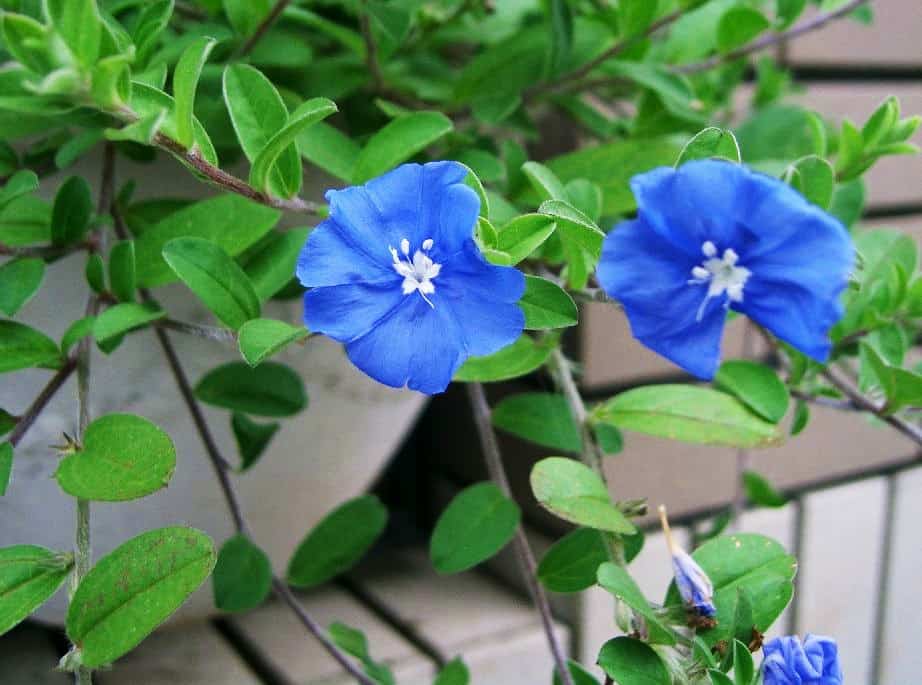
Yes, it is another morning glory family characterized as a blue daze. The pleasant evergreen shrub looks similar to the one we discussed here. It also grows funnel-shaped sky blue flowers.
Dwarf Morning Glory
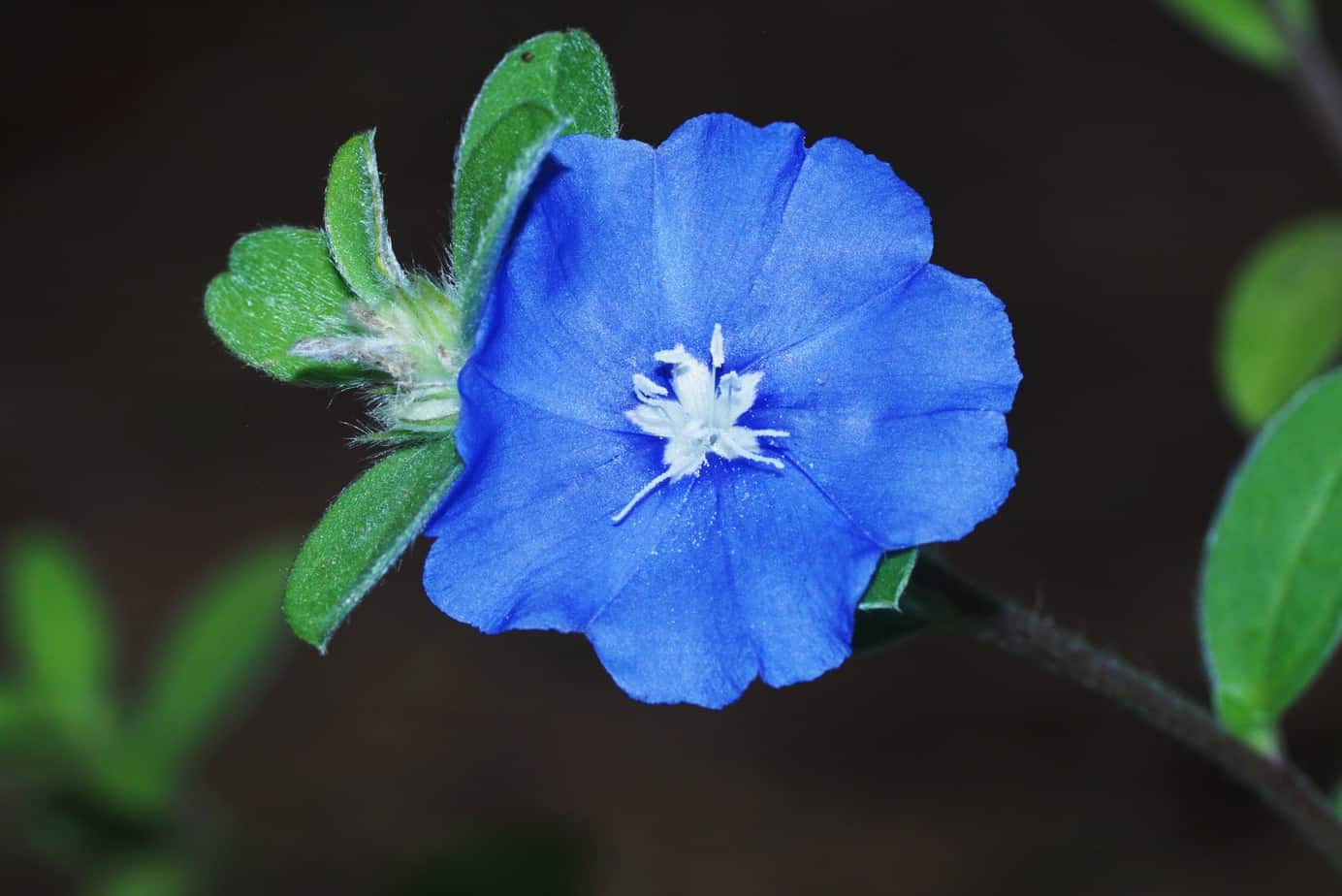
Evolvulus alsinoides can grow as an annual or perennial and grows blue to lavender flowers. As with the other species, it does not tolerate wet feet and does not do well with poor air circulation.
Blue Daze Diseases and Pests
Compared to other species, the blue daze is a disease-free plant. Yet, there is one common problem to keep an eye on fungal problems like pythium fungus. It results from waterlogged soil.
The roots become blacken and decay, looking saturated. The disease can spread into the stems leading to premature death. To control pythium, you can use a fungicide for the disease. The best is to take healthy cuttings to grow a new blue daze.
Pest you can find is fungus gnats and shore flies.
Frequently Asked Questions
The best way to care for your blue daze plants is to provide them with a soil type that is airy and does not retain moisture. Place your tropical beauty in a rock garden with other plants in full sun. You can add some organic mulch around them and check if the top few inches of the soil are dry before watering.
The Blue My Mind is also known as the dwarf morning glory, similar to the blue daze. The only difference is that it is an Evolvulus hybrid. Both plants are excellent plants found in the flower world. Both produce blue flowers with silvery green leaves.
You can grow your blue daze as an indoor plant in a hanging basket or a container. The same care applies to taking care of it outside. Provide your blue daze with well-drained soil and full sunlight to produce a blue color flower.
You can find the blue daze at your local nursery or look here at Plantly. You need not leave your home and can have it delivered to your door.
Whether you want to buy, sell or simply reach out to other plant enthusiasts, Plantly is the right place to be!
In stock In stock Only 1 left in stock Only 2 left in stock
Free Shipping
$39.99
Sold By:
Aloha Hawaii Orchids
$44.99Oncidioda Jimbo ‘Swarm’ Orchid, Fragrant Flowers, Live Plant From Hawaii
Rated 4.65 out of 5 based on 268 customer ratings45
Sold By:
Aloha Hawaii Orchids
$4.75
Sold By:
Cacti and Exotica
Opuntia Maverick Variegata 2″
Rated 4.98 out of 5 based on 59 customer ratings00
Sold By:
Cacti and Exotica
Free Shipping
$233.09
Sold By:
BONSAI WORLD LLC
Juniper Bonsai Tree – Trained (juniper procumbens nana)
Sold By:
BONSAI WORLD LLC
$9.99
Sold By:
Succulent Oasis
Medium Succulent Plant – Firestorm
Only 2 available and it’s in 2 people’s basket Rated 4.84 out of 5 based on 352 customer ratings02
Sold By:
Succulent Oasis


